Germany started the FIFA Women’s World Cup as they mean to go on by beating China 1-0. It was a controlled performance from the Germans but they still endured some difficult moments. This tactical analysis will look at why China managed to cause Germany problems, but also why Germany largely dominated the game.
Lineups
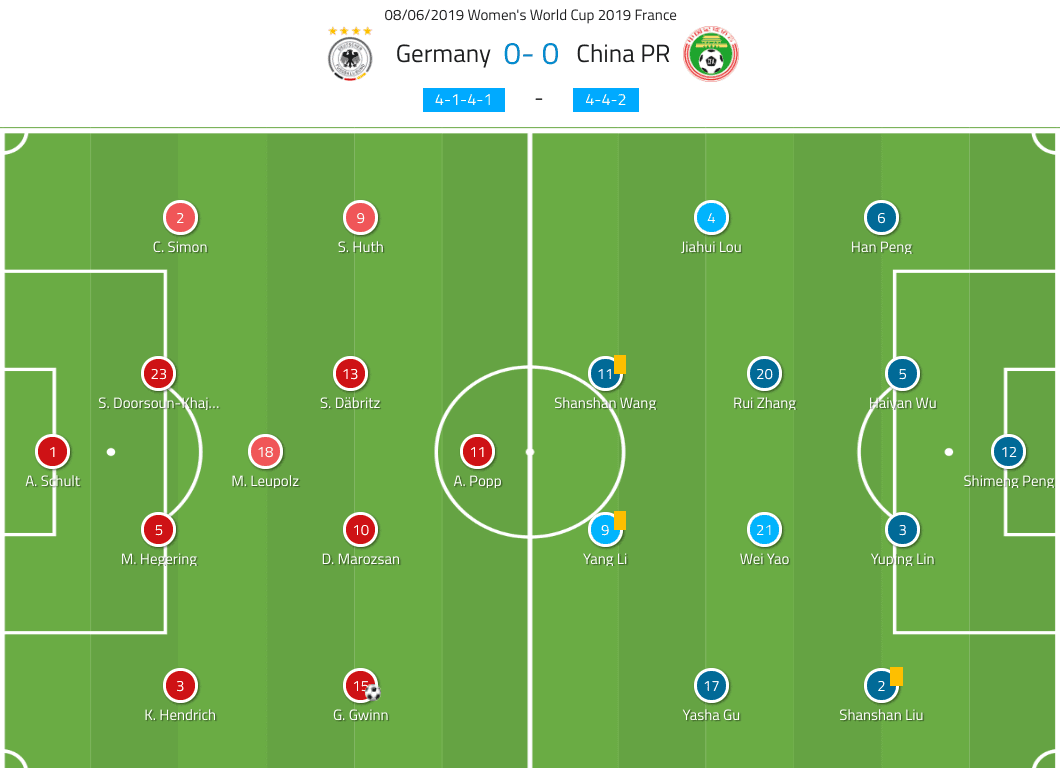
Germany started in a 4-1-4-1 shape when defending, which changed a lot in attack given the many rotations the German players made. China started in a rather straightforward 4-4-2 where one of the two central midfielders often stepped up to press Germany’s defensive midfielder Melanie Leupolz when the opportunity was there.
Tactical analysis: Germany’s pressing
Germany wrestled control of the contest early thanks to their hugely effective pressing. They employed a man-orientated pressing system out of their 4-1-4-1-shape. This meant that the lone striker, Alexandra Popp, initiated the press and steered China towards one side. The chain reaction was for the German players on that side to quickly mark an opponent. We can see this in the image below as Popp (yellow) puts pressure on a defender. Dzsenifer Marozsán marks a midfielder and the right winger Giulia Gwinn marks the left-back. We can also see that the German right-back Kathrin Hendrich (black) also steps up to mark.
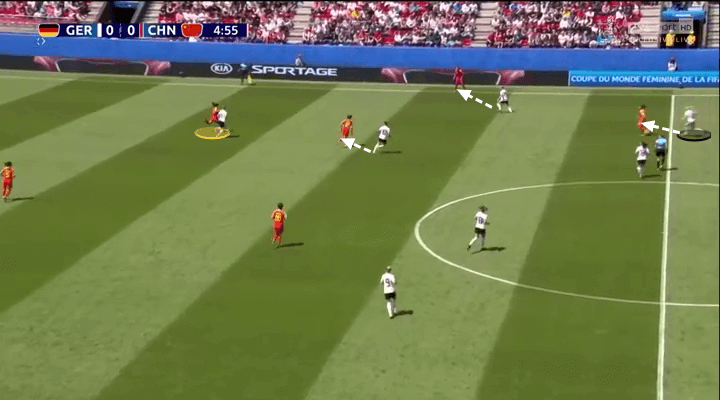
This aggressive type of pressing forced China into numerous technical errors in their own half which allowed Germany to dominate the game. The image below highlights one of the most glaring examples of China’s issues with the German pressing scheme. As we can see, Germany again performs aggressive man-orientated pressing inside China’s half. The ball-carrier has no passing option and ends up passing the ball out for a corner.
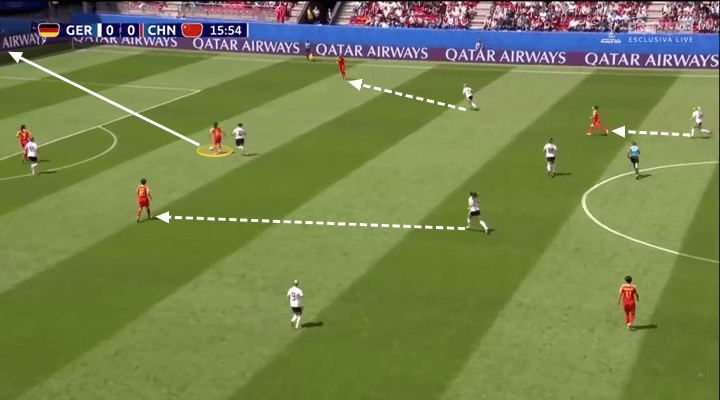
The two German full-backs were integral to the success of the press since China’s wide midfielders often came inside to provide passing options for the pressurised defenders. The German full-backs followed these movements inside and often removed the option of that pass, or stepped in to regain the ball. The below option shows Carolin Simon follow the movement inside. Additionally, note how she gets help from the two nearest teammates who help out to create a 3 vs 1 against the Chinese player.
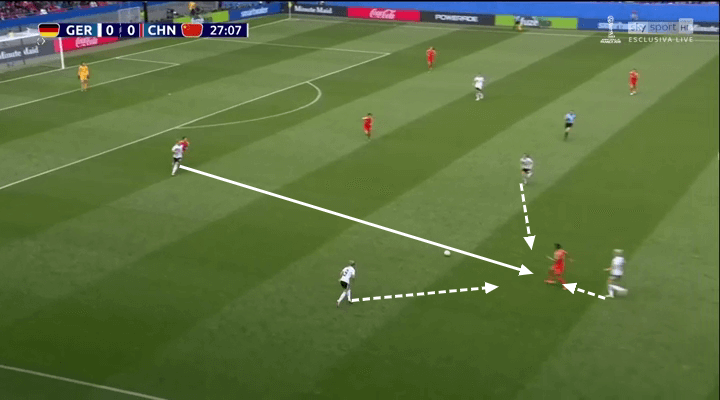
Germany’s pressing was very aggressive and efficient throughout and never allowed China to settle.
Germany’s setup in possession
From their 4-1-4-1 base, Germany made some rotations to create interesting positions for their attacking players. First of all, the two centre-backs split wide, the two full-backs pushed high and the defensive midfielder Leupolz often dropped in-between the centre-backs. The remaining two central midfielders, Sara Däbritz and Marozsán, had contrasting roles. While Däbritz acted as a link-player between the defence and attack, the creative and excellent Marozsán moved higher and looked for space behind China’s midfield. The two wingers, Gwinn and Svenja Huth, moved inside to open up the wings to the attacking full-backs.
We can see some of these movements in the image below. Firstly, we can identify the makeup of the midfield triangle. Leupolz is deep with Däbritz between China’s midfield and attack with Marozsán higher between China’s midfield and defence. On the right wing, we can see Hendrich (black) wide with Gwinn (white) having moved centrally. These positions gave Germany plenty of central options to progress the ball to.
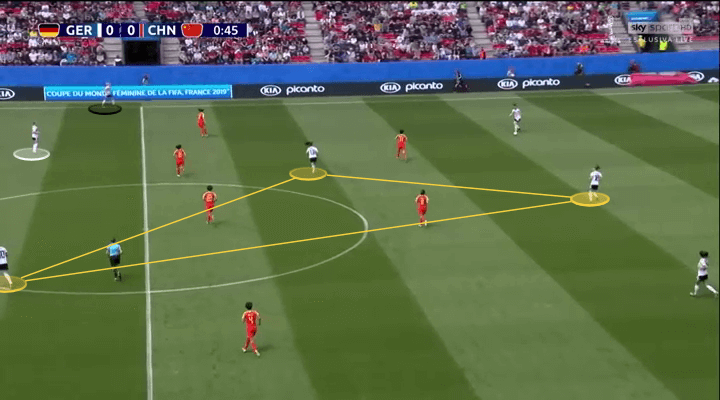
China particularly struggled to deal with the positioning of Marozsán and Däbritz. In the image below, Sara Doorsoun-Khajeh threads the ball through to Däbritz who has found a huge space behind China’s midfield.
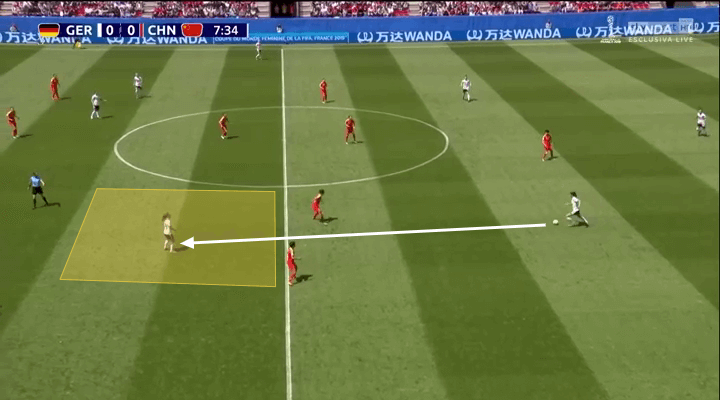
As she turns, the attacking positions of Germany see them attack the Chinese back-four from all angles in a 6vs4-situation. Crucially, there are runs made outside the back-four as well as inside it. This made it harder for China to defend as Germany threatened in many areas.
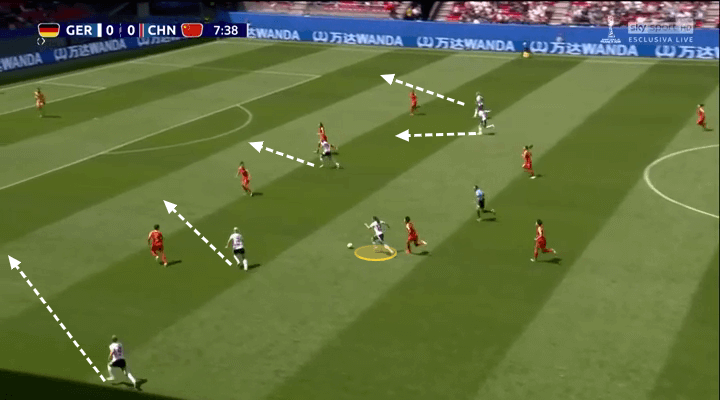
Germany’s positioning provided them with many benefits in this game, but it also caused some issues which almost ended up costing them the game. Let’s look at these below.
China’s counter-attacking
China had very few organised attacks in this game as they struggled to cope with the German pressing. However, they did create some of the best chances of the game from quick counter-attacks. The main reason they got the opportunity to do so was because of sloppy passing from Doorsoun-Khajeh in particular. The centre-back made a series of technical errors in the first half that gave China the chance to counter-attack at pace, which they did well.
The image below highlights the scene leading up to one of China’s best chances in the first half. Doorsoun-Khajeh tried switching the ball across to Marina Hegering but the pass was intercepted by Gu Yasha. With the German full-backs positioned so high, China had lots of space to attack into.
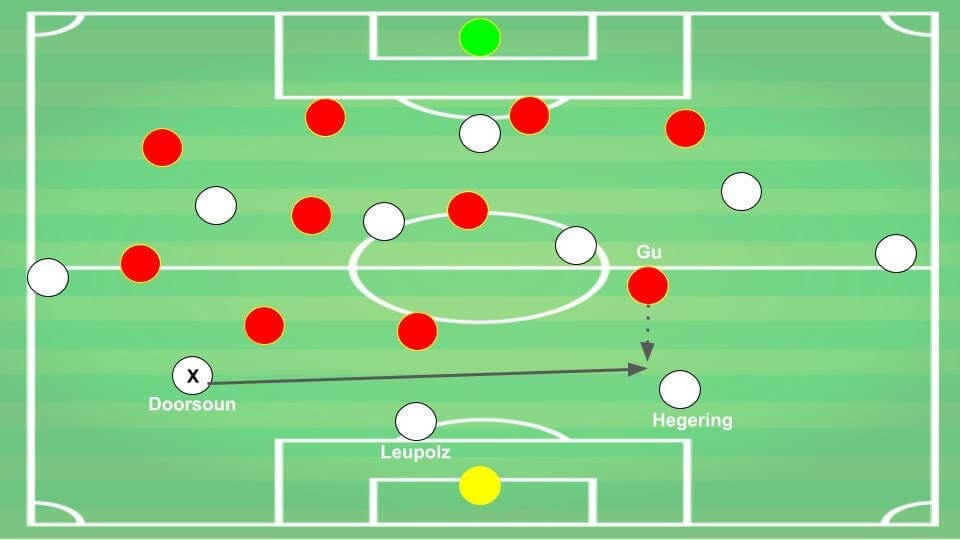
The below image is the continuation of the above scene. Hegering stepped up to regain the ball but was played around. From this situation, it looks impossible for China not to get a shot on target but poor decision-making and a brilliant German block in front of goal prevented them from taking the lead.
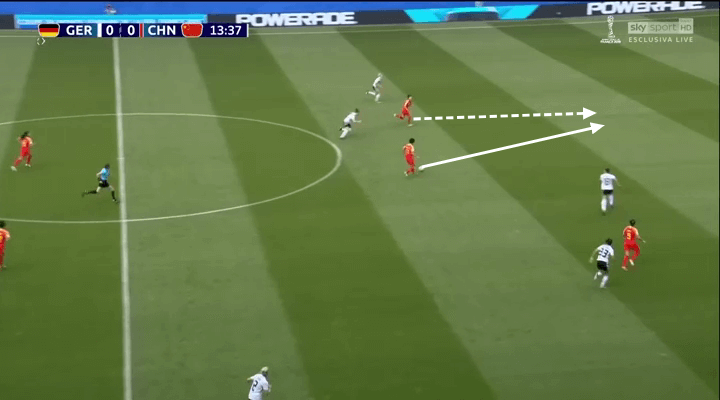
There were other occasions when Germany were caught out, too. The below image highlights China counter-attacking immediately after the ball was won. The two German full-backs (yellow) are once again too high to have time to help out defensively. On this occasion, Leupolz hadn’t dropped between the centre-backs, leaving Germany to defend the counter-attack with only their two centre-backs. Defending such a huge space without help is difficult, and this situation ended with China hitting the post and then a great save by the goalkeeper Almuth Schult.
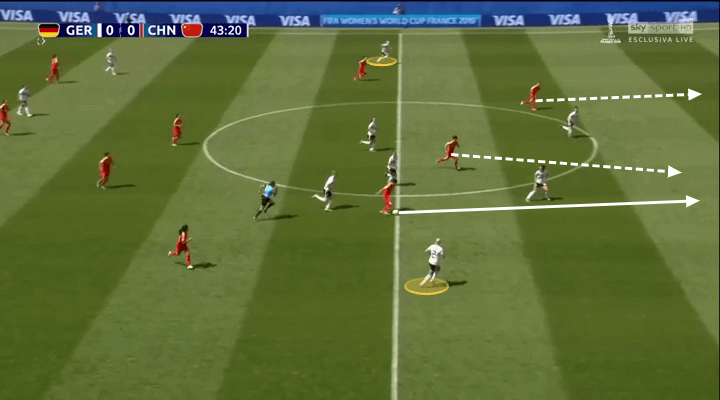
Going into the game against Spain, Germany must make sure they aren’t as easily carved open on the counter-attack as they were against China. They were lucky to escape without punishment, but make no mistake, if this continues they will be punished for it.
Conclusion
As this analysis has shown, China proved a tough opponent for Germany but still, they were by far the better team. They will need to find a way to defend better in defensive transition if they are to progress towards the latter stages of the tournament, though. With the likes of Marozsán pulling the strings in midfield, Germany have the quality to do just that but they need to learn their lesson of not getting exposed on the counter-attack like they were yesterday.
If you love tactical analysis, then you’ll love the digital magazines from totalfootballanalysis.com – a guaranteed 100+ pages of pure tactical analysis covering topics from the Premier League, Serie A, La Liga, Bundesliga and many, many more. Get your free copy of the FIFA Women’s World Cup 2019 Preview magazine right here and sign up for a ₤50 annual membership (12 monthly issues plus the annual review) right here

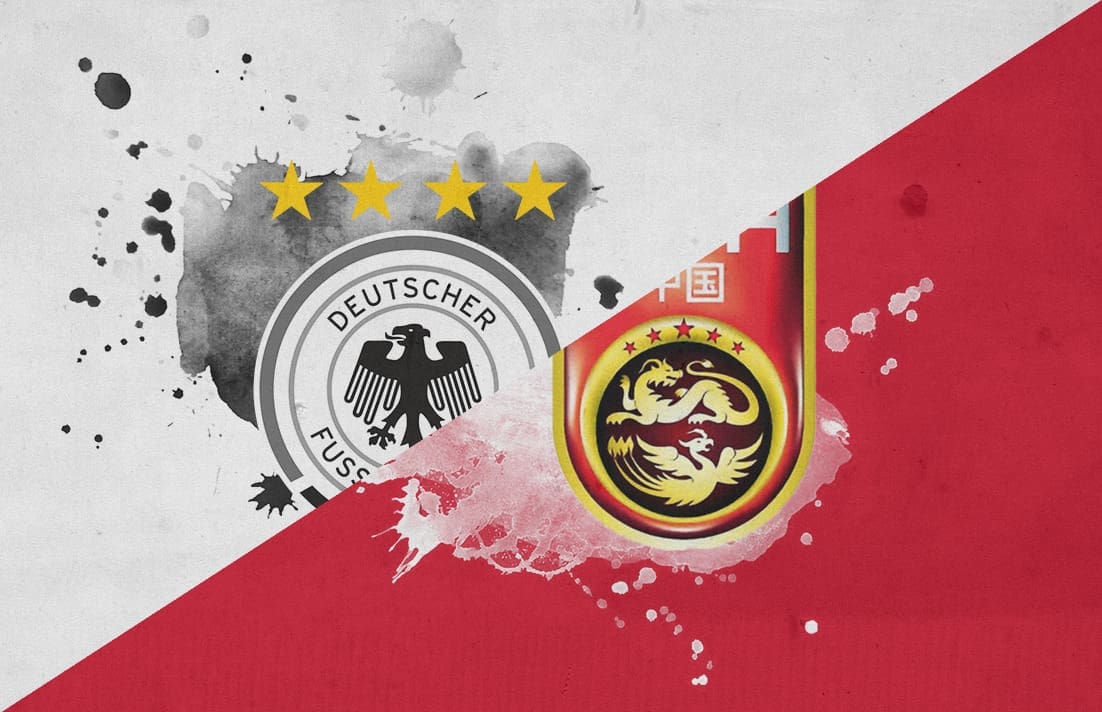


Comments